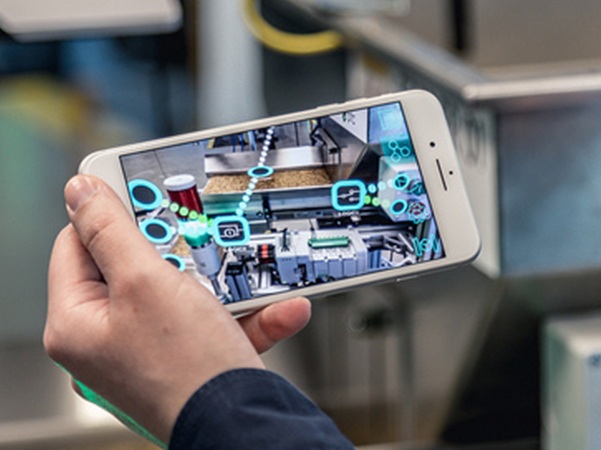There are questions that haunt Hisham Bedri:
Why hasn't augmented reality technology been adopted more widely?
Why isn't everyone using it to enhance their daily lives and drive results within their workplaces?
It's this idea – the thought that there is something missing in the technology that has prevented it from being more ubiquitous – that drives Bedri to build, iterate, and innovate.
“We know that there is the potential for real, meaningful change in our lives through spatial technology,” he says. “We have a vision for how computing should work and every day we’re building our way out. We’re building the technology that will enable spatial technology to make that big impact.”
By we, Bedri means the forward-thinking PTC Reality Lab where he is an innovation researcher. He describes working on the technical aspects of this vision as a sort of release, knowing that with each algorithm or technological breakthrough, they’re getting closer to making their vision a reality.
“PTC is one of the only places where spatial technology is having an impact,” Bedri says. “AR is cool, it’s so fantastic, but we need to take the cool part a few steps further to make a positive meaningful difference in people’s lives.”

Bedri’s interest and work in the PTC Reality Lab lies at the intersection of spatial technologies, like 3D image and sensing, and making the world a better place to live and work. He’s acutely aware of the potential of spatial technologies and is singularly focused on transforming those possibilities into realities.
After getting exposure to real-world applications of 3D technologies by working on medical scanners, Bedri wanted to learn and explore more. As an MIT graduate student, he was able to delve deeper into this research and became especially intrigued with AR because of its ability to quickly capture “presence” – in other words, combining the physical with the digital to create a more complete picture of reality.
“With all the technology available to today, we’re so digitally connected, but we’re not present. As a society we’re lonelier. It begs the question, what is it about presence that matters? What is it about physical presence that the digital hasn’t been able to replicate? That’s what’s driving me.”
Bedri’s research at PTC centers on reality virtualization through 3D sensors – what he calls the Reality Zone. It’s a volumetric capture space, where everything within a set area can be digitally captured in real-time.
Existing technology has the capability for this type of 3D capture, but not on a continuous, real-time basis.
“It’s typically one scan and that data becomes stale and obsolete very quickly,” Bedri says.
The industrial applications of this technology in conjunction with augmented reality are endless. For example, a technician could go into a factory to perform a complex repair. The software and camera would capture the intricate process so when another person – perhaps not with the same expertise – goes to do the same repair, they can view a holographic video of someone performing the repair through HoloLens or a smartphone. The worker could stop, rewind, or fast forward the video to go at their own pace.
“It’s like collaborating with a previous version of yourself or someone else,” Bedri says. The potential for more effective remote collaboration is significant for factories and other industrial settings, in that it could save both time and money. In addition, a real-time 3D capture of a factory floor, which is constantly in motion, could assist robots in navigating the shop floor around machines and humans more safely.
While technological innovation is the work product of the PTC Reality Lab, a core tenet of their mission is to improve how humans interact with machines, data, and all things digital. “You have to start with the human; they’re the vision, the energy, they’re the everything. We try to make our work super accessible and extensible.”
The placement of the lab within the Customer Experience Center (CXC) at PTC’s Boston headquarters has put the team in front of the customers they intend to use their innovations.
“It brings us that much closer to real-world problems,” Bedri says. “We have an amazing set-up and I think that it reflects a lot of the energy we’re trying to put into the space and the company.”
As far as the team itself, Bedri describes it as a place to mix ideas and expertise – and have fun while doing it. “We’re all sitting next to each other, so if we have an idea, we can turn around and yell across the room and then jump into working together on it. Whenever we get the opportunity to work on technical challenges, it doesn’t feel like work. It’s pretty cool.”
Tags: Augmented Reality
Nancy White is a content marketing strategist for the Corporate Brand team at PTC. A journalist turned content marketer, she has a diverse writing background—from Fortune 500 companies to community newspapers—that spans more than a decade.
©Copyright 2024. All rights reserved by Modelcam Technologies Private Limited PUNE.
Image Courtesy : PTC